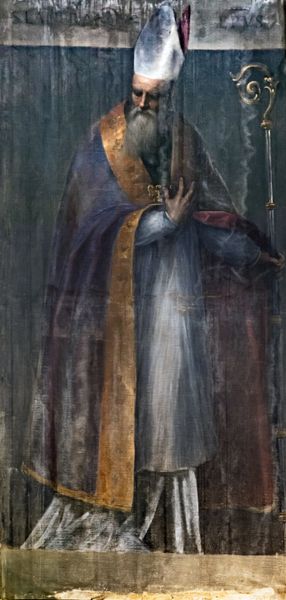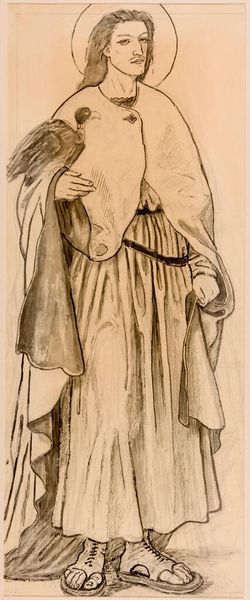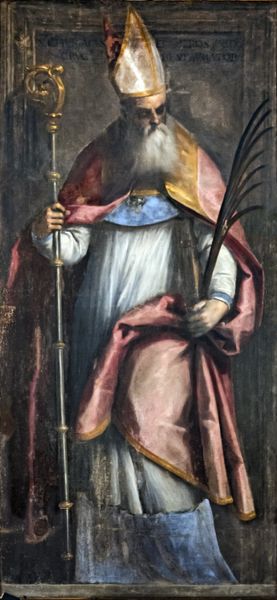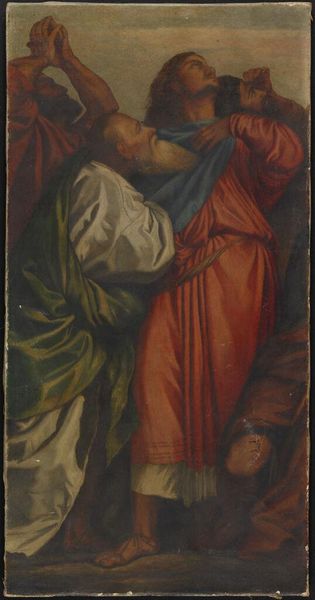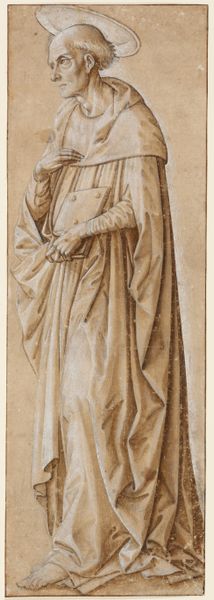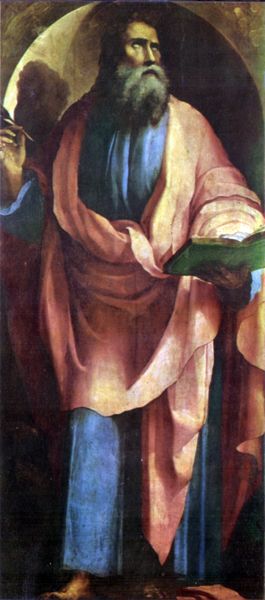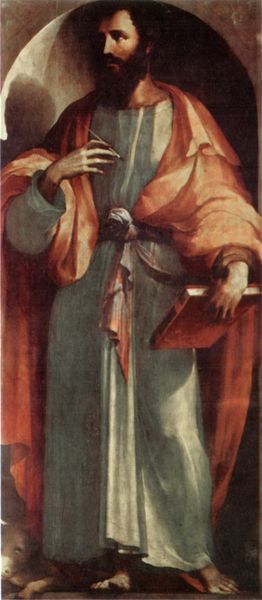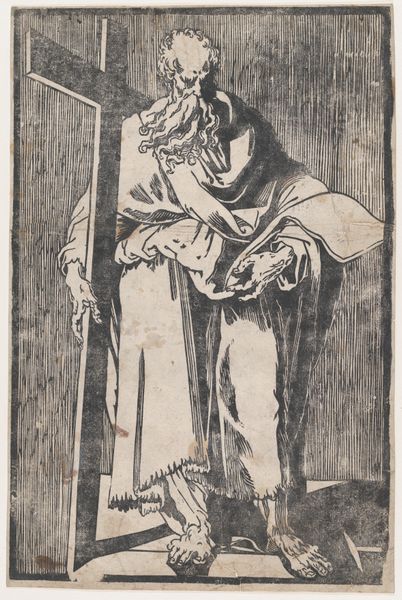
painting, oil-paint
#
portrait
#
venetian-painting
#
painting
#
oil-paint
#
mannerism
#
oil painting
#
history-painting
#
academic-art
#
portrait art
Copyright: Public domain
Curator: There's a rather imposing figure here, wouldn't you agree? An oil painting of "Papa Cleto," created in 1593 by Palma il Giovane, residing here in the Church of Santa Maria Assunta. It's quite arresting, I find. Editor: Arresting is right. There's a sternness that comes through, doesn't it? And it's huge! I wonder about the power dynamics at play, considering the setting. Is it celebratory or…something else? Curator: Well, Cleto himself was an early pope, so he represents a direct line of authority. Consider the placement, here. His figure and the ionic column give the painting the kind of architectural stability he wants the Catholic Church to have, even through times of tumultuous shifts in faith and identity. Editor: And visually, that plays out, too, right? Look at his raised hand—not just blessing, but signaling. The weight of his vestments—a really opulent gold, isn't it?—anchoring him in tradition, perhaps in resistance to any reform. Curator: Absolutely! The symbolism of the cross in his other hand is so critical. The intersection of heaven and earth. And his gaze… it connects to the cultural memory that even now the Church still represents a specific intersectional identity of its own, doesn’t it? Editor: True. And that gets dicey, right? What kind of history are we reifying here? I mean, even the details like the red in the mantle or cape speak of sacrifice, and you have to ask: sacrifice for whom? Sacrifice of whom? There’s so much baggage packed in here. Curator: It's layered. Every element, from the material luxury to his physical positioning in space, all reinforces his stature. These are symbols that trigger not just faith but also obligation, which translates to cultural endurance over time. Editor: You're right, the weight of this figure! The oil, thick and deliberate. It almost traps him. Curator: What a potent symbol of its moment! Palma il Giovane masterfully delivers continuity through the image of papal power. Editor: But for me, I can’t quite shake this tension. History is never a straightforward portrait. There's power, sure, but I leave wondering whose power we’re choosing to commemorate.
Comments
No comments
Be the first to comment and join the conversation on the ultimate creative platform.
